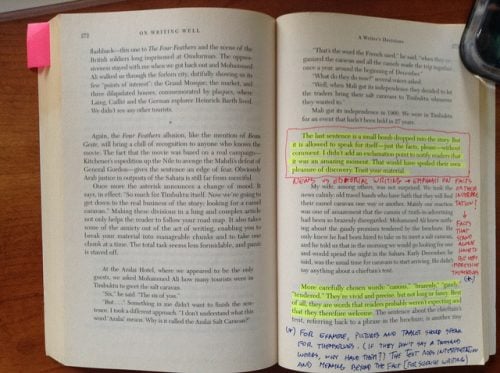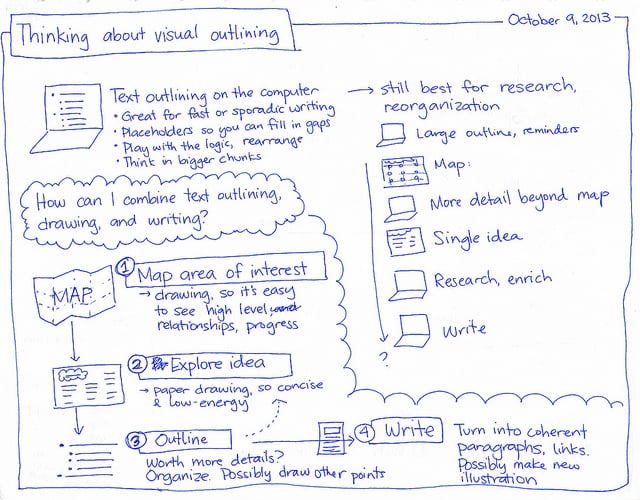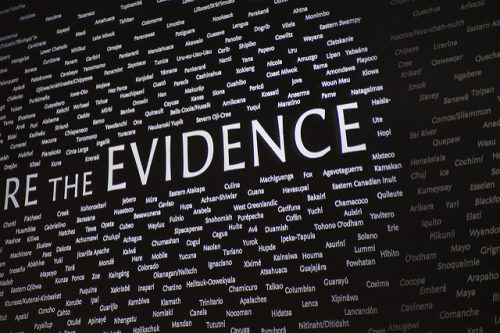Are you the type of person to passively read your assigned text only because you have to?
Or do you dive right into it and react with the same intensity any self-proclaimed Star Wars nerd would react to this climactic scene?
No matter which category you fall into, knowing how to write a reaction paper can help you explore literature more deeply and connect to characters. And believe it or not, it can also give you the opportunity to actually enjoy your school assignments.
Regardless of how much you like or dislike the book you’re reading for class, writing a reaction paper can be a little challenging, especially if it’s your first time writing one.
But not to worry—I’m here to break it down by showing you what a reaction paper is and how to be a Jedi master in your paper writing.
What Is a Reaction Paper?
Before we get into how to write a reaction paper, you have to know what it is. In its simplest form, it’s pretty much exactly what it sounds like—a paper that expresses your reaction to a certain piece of literature.
Easy-peasy, right?
Not so fast! There are other components that you need to include to make sure you not only get a passing grade on your reaction paper, but that you succeed with flying colors.
To really write a great reaction paper, one with precise language and structure, there are a few things you have to include… and a few things you should avoid.
It can be easy to just ramble when discussing your reaction, which is definitely something to steer clear of. You want to include your response to the literature, but not to the point where that’s all the paper is about.
Instead, add some support from the literature to give more substance to your response.
On the other hand, you might go the opposite direction and turn your reaction paper into an analytical essay. And this, whether or not it’s well-written, is not the assignment.
So stick to the assignment, and follow my advice to make your writing awesome.
Success Happens Before You Write
One of the biggest things that determines the outcome of your reaction paper is not the writing itself—it’s what you do while you’re reading. If my assignment were to react to an aspect of the Star Wars trilogy (the original trilogy, that is), I would watch each installment more closely and more fervently than ever.
Take notes while you read

Taking notes as you read literature is helpful for just about any essay, but for a reaction paper, it’s crucial.
Writing down your initial reactions at the end of every chapter—along with any questions you might have about the plot, the characters, etc.—will help you to later develop those reactions into more cohesive and impactful writing.
Annotate anything that makes you react

Whether it’s writing in the margins or on sticky notes, annotating phrases, sentences, or paragraphs that make you react can give you a quick reference for your support later.
Used in combination with the notes mentioned earlier, you’ll be all set to write your paper without having to re-read the entire novel looking for that one quote.
You’re probably going to take way more notes than you’ll use in your paper, and that’s fine. It’s better to write something down and not use it than to not write it down and wish you had. Taking notes will benefit you in many ways:
- It will help you sort through your ideas and find the ones that have a common theme.
- It will make the writing process easier and more fun.
- It will help you engage more with the text.
Re-read if you have to
Don’t be afraid to re-read certain sections of the book later to get better clarity and evolve your reaction a little bit more. Some students don’t like reading the text the first time, so they surely don’t want to spend even more time re-reading it. They just want to write their reaction paper and be done with it.
Don’t be that person. It won’t get you anything but sub-par grades.
Of course, the more detailed your notes, the less time you’ll have to spend re-reading, so use whatever combination of these strategies works best for you.
How to Write a Reaction Paper
Now that you’ve read, re-read, and have compiled all your notes and annotations, it’s time to start the writing process.
Brainstorm ideas

Before you begin the actual writing, it’s helpful to get all your ideas out on paper. Brainstorming can be done in a number of different ways—including free writing and mind mapping. Whatever method you use, brainstorming allows you to do an idea dump without any predetermined structure.
This is an important step. (It might even be the most important thing you take away from learning how to write a reaction paper!)
Right now, all you have is your initial reaction and any relevant annotations. Brainstorming gives you a chance to reflect on those initial reactions and develop them into something more paper-worthy.
My brainstorming session might include points about different Star Wars characters, that scene when Han cuts open the Tauntaun’s stomach and puts Luke inside, the Force, and other things I noticed while watching the trilogy.
From my brainstorming, then, I realize that the theme of good vs. evil shows itself in various ways.
Make an outline

Once you have all your ideas out, you should put them in order, so you know what you’re going to write about. Plus, it helps make sure you don’t forget anything.
During outlining, you choose the precise topic for your reaction paper—unless a topic is specifically assigned to you. Typical topics include a theme, character, or plot point.
An outline is a powerful tool in any writer’s arsenal that allows you to plot what you’re going to write about in the introduction, each body paragraph, and the conclusion.
Assuming my reaction paper was about the theme of good vs. evil in the Star Wars trilogy, my outline would look like this:
- Introduction
- Hook
- Thesis statement
- Intrigue and relatability to Luke’s struggle
- Light side and dark side of the force represent good and evil.
- Luke struggles between the two.
- Confusion at the death of Obi Wan Kenobi
- Obi Wan doesn’t die the way one might think. He simply disappears, and Darth Vader’s lightsaber passes through where he was just standing.
- Darth represents evil, and Obi Wan represents good. This made it seem like evil was conquering good.
- Could be argued that Luke represents good.
- Yet he has his own internal struggle, coming out as good, but isn’t purely good the entire series.
- Conclusion
- Throughout the original trilogy, I had a roller coaster of emotions as to how the battle between good and evil would play out. While I hoped it would turn out for good, there was always a careful balance between the two.
- External (Darth Vader and Obi Wan) and internal (different sides of the Force pulling at Luke) struggle between good and evil.
- Introduction
Develop a strong thesis statement
Once you know what you’re going to write about and how it’s going to be structured, it’s time to start filling in the blanks of your outline.
If you haven’t already, now is the time to develop a thesis statement. This tells the reader precisely what you’ll be writing about, but leaves the support and smaller details for later. Consider your thesis statement to be kind of like a preview.
It’s important to note that many teachers will lower a grade significantly or even give a failing grade if there is no thesis statement. So be sure yours is in there!
The thesis statement for my Star Wars reaction paper might look something like this:
The battle between good and evil can be depicted no better than in the original Star Wars trilogy. Luke is an intriguing and relatable character as he battles the internal forces of good and evil. Obi Wan Kenobi and Darth Vader engage in a battle that, while confusing at times, perfectly positions pure good versus pure evil.
Don’t forget your evidence

Once your thesis statement is done, it’s time to start writing the rest of the paper. I can’t stress the importance of support enough. Without it, you’re simply offering an opinion piece, not writing an academic paper.
You may have included some details of your support in your outline, but don’t be afraid to really synthesize the literature to show why you reacted the way you did.
And of course, once you’re done writing the body paragraphs, you need to wrap it up nicely with a conclusion. This paragraph should be brief, about the size of your introduction, and restate the intention of your paper, including any new information you didn’t preview in your thesis statement.
Still Need a Little Help?
It’s okay if you don’t get it on your first try.
Getting familiar with how to write a reaction paper takes some time.
And even if it’s not new for you, editing your own work doesn’t always work out as well as someone else looking it over.
Luckily, the Kibin editors can help proofread and edit your essay so that your instructor will have a positive reaction to it.
May the force be with you.